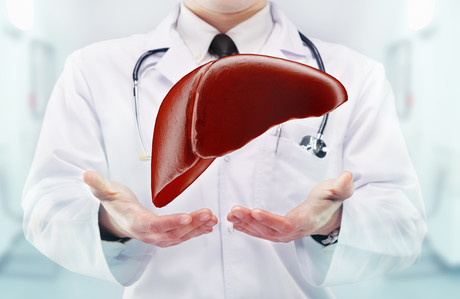Predicting risk of liver fibrosis

Researchers from Sydney’s Westmead Institute for Medical Research have good news for the 6 million Australians suffering from liver disease, and they are confident their discovery will lead to personalised treatments for those suffering from tissue scarring.
Westmead’s Professor Jacob George and Dr Mohammed Eslam led an international team that has identified a protein that causes liver tissue scarring (liver fibrosis). Interferon lambda 3 (IFNL3) is a naturally occurring protein that promotes immune attack against viruses but also causes tissue damage when uncontrolled activation occurs.
In a study published online in Nature Genetics, the team built on their previous work determining that common genetic variations associated with liver fibrosis are located on chromosome 19 by analysing thousands of liver samples from patients with hepatitis C. This enabled them to determine the specific IFNL protein responsible for liver fibrosis and demonstrate that there is increased migration of inflammatory cells from blood to liver following injury.
Interestingly, the amount of liver damage caused by the increase in IFNL3 secretion is largely determined by our genes.
“Liver disease is now the fifth most common cause of death in Australia, affecting 6 million Australians,” said lead author Professor Jacob George. He added that predicting the risk of liver disease in individual patients “will play a vital role in reducing the burden of liver disease into the future”.
“We have designed a diagnostic tool based on our discoveries, which is freely available for all doctors to use, to aid in predicting liver fibrosis risk. This test will help to determine whether an individual is at high risk of developing liver fibrosis or whether a patient’s liver disease will progress rapidly or slowly, based on their genetic make-up.”
Co-lead author Doctor Mohammed Eslam hopes that this discovery will lead to the development of novel potential treatments for liver disease and the goal of personalised medicine. He said, “This could be medicine targeting IFNL3 that is tailored to an individual’s genetic make-up, but could also include modifying usual treatment depending on whether a patient has IFNL3 risk genes.
“There is an urgent need for a safe pharmacologic therapy that can prevent the progression of liver damage. There are currently no treatments available for patients with advanced fibrosis, and liver transplantation is the only treatment for liver failure.”
As well as developing new therapeutic treatments for liver disease, the Westmead team hope to target scarring in other organs such as the heart, lung and kidneys, which are responsible for half of all deaths in the Western world.
Specially designed peptides can treat complex diseases
Two separate research teams have found ways to create short chains of amino acids, termed...
Exposure to aircraft noise linked to poor heart function
People who live close to airports could be at greater risk of poor heart function, increasing the...
Predicting the impact of protein mutations with simple maths
Researchers have discovered that the impact of mutations on protein stability is more predictable...



